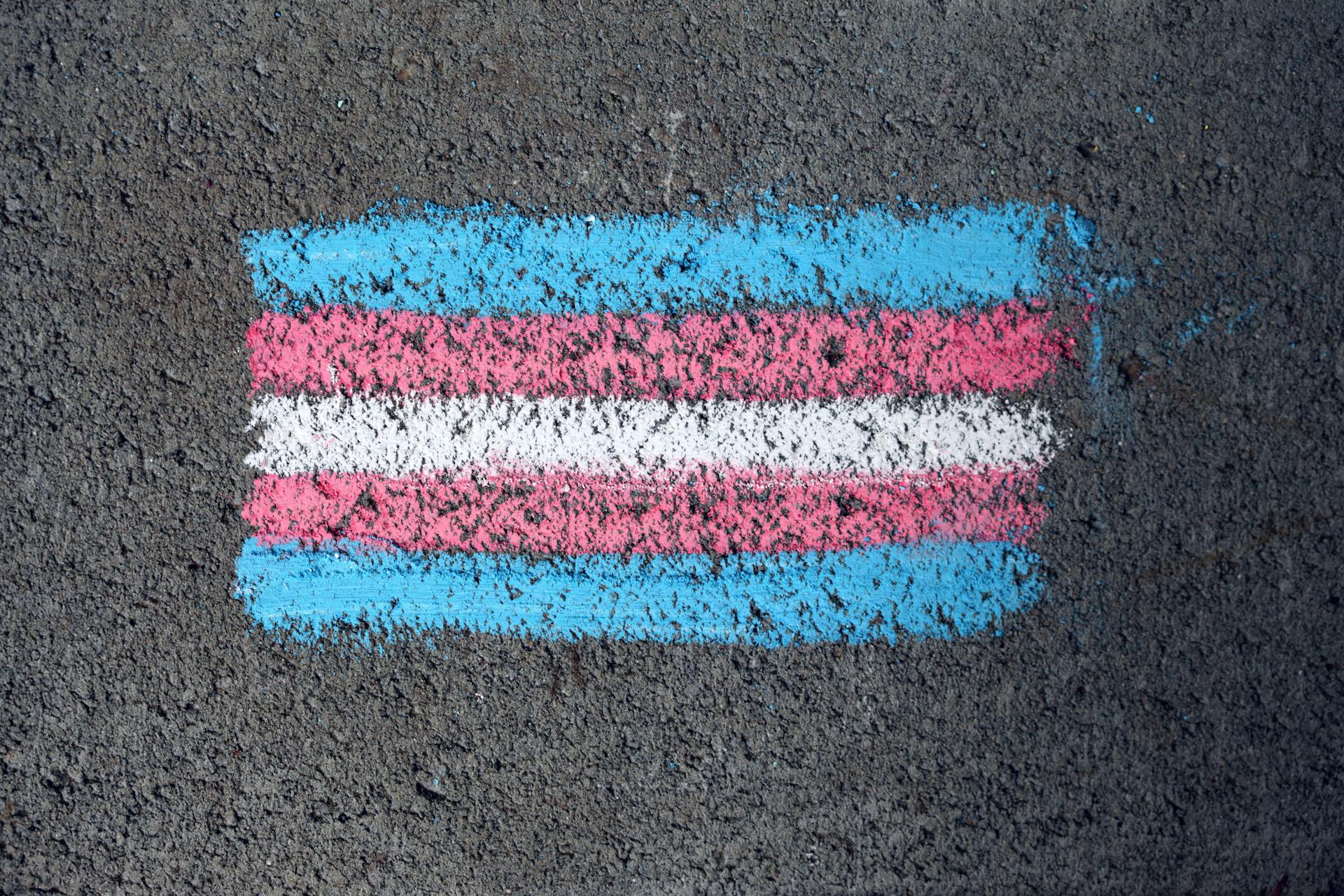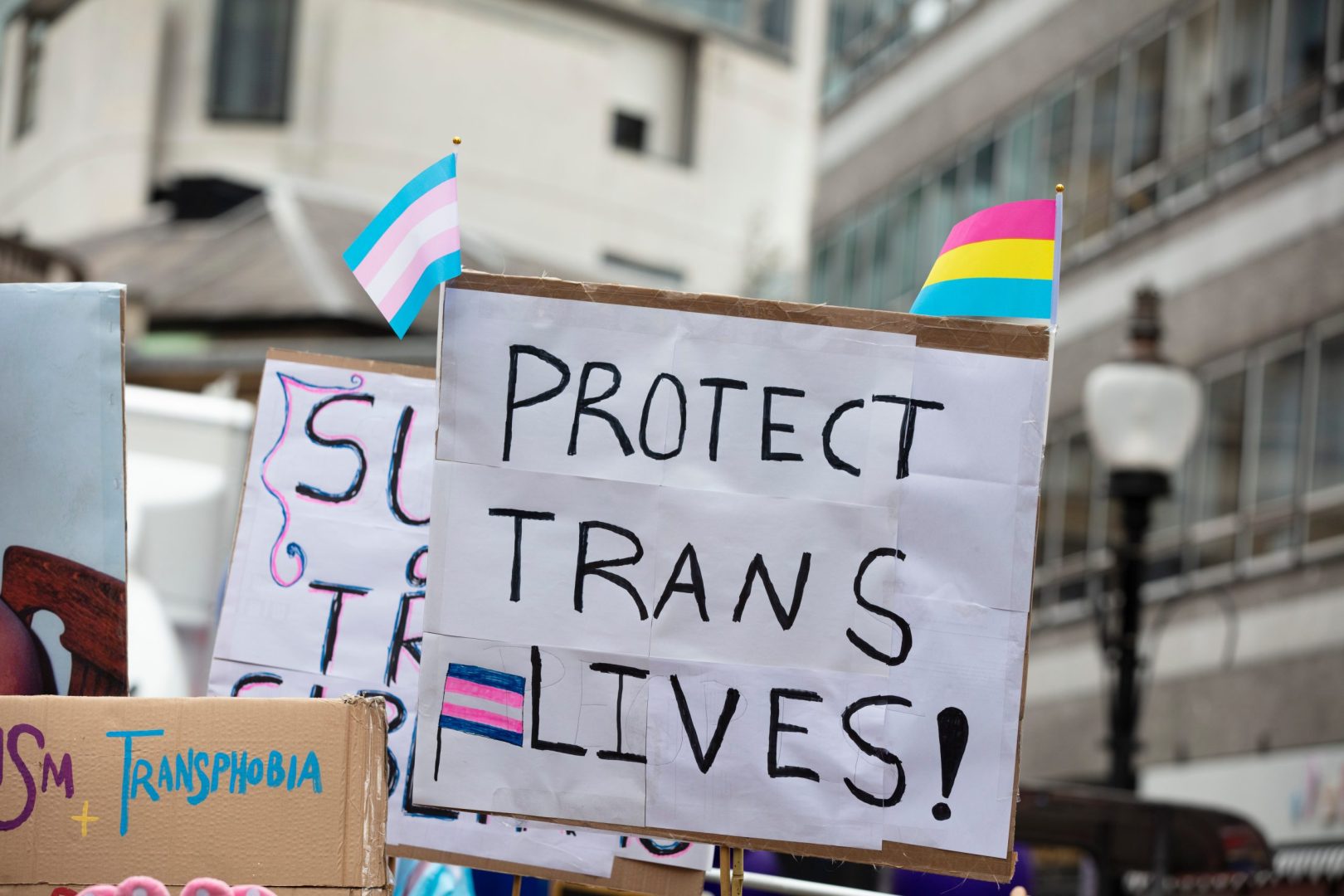Immediately following Transgender Awareness Week, in which we are invited to uplift transgender people’s stories, November 20, 2024, marks the 25th annual observance of Transgender Day of Remembrance. On this day, people around the world will come together to mourn all those we’ve lost to anti-trans violence.
Whereas the first Pride was a riot, the first Transgender Day of Remembrance was a vigil. In 1999, transgender advocate Gwendolyn Ann began the observance in memory of Rita Hester, a Black transgender woman who was killed the year before.
The ongoing epidemic of anti-trans violence continues the need for observing Transgender Day of Remembrance.
It’s heartbreaking that Transgender Day of Remembrance is still needed 25 years later, as transgender and nonbinary people continue to experience an epidemic of violence. This violence is most acute for people at the intersection of multiple systems of oppression, especially transphobia, racism, and misogyny. In any given year, the majority of people who have been killed are BIPOC transgender women, with Black trans women facing the highest rates of violence.
To date, there have been 28 reported deaths in the United States due to anti-trans violence in 2024. Twelve of these people were 25 years old or under. However, the number of trans deaths in any given year is widely believed to be undercounted, as many trans people are deadnamed and misgendered in media, making their deaths hard to track. The Trans Remembrance Project includes additional transgender and non-binary people lost in 2024, including eulogies to honor their lives.
These lists also do not include young people who died by suicide after experiencing anti-trans violence or discrimination, like Nex Benedict. Nex was a 16-year-old nonbinary high school student whose mother is a member of the Choctaw Nation. He died in February a day after he was reportedly attacked by classmates on school grounds, following months of persistent bullying. His death was ruled a suicide.
Tragically, transgender and nonbinary young people experience depression and suicidality at disproportionately high rates, in large part due to the discrimination, stigma, and violence they experience. As with trans lives lost to violence, the intersection of racism and transphobia doubly impacts BIPOC transgender and nonbinary people. According to a recent report by the Trevor Project, 58% of Black transgender and nonbinary young people seriously considered suicide and 1 in 4 (25%) attempted suicide in 2023.
This mental health crisis is not inherent to transgender and nonbinary identities: it is a result of all the ways that trans people are mistreated, now and historically. In 2023, the Human Rights Campaign declared a National State of Emergency for LGBTQ+ Americans in response to having more than 550 anti-LGBTQ+ bills introduced across the country, more than 80 of which were passed into law. Well over half of these bills specifically target trans young people. And we know that more are on the way. These bills and hateful rhetoric portray deviance from cisgender norms as monstrous, deranged, and dangerous. They take away transgender young people’s agency; spur physical violence against transgender people; remove discrimination protections in housing, employment, and health care; and create a sense of despair.
The situation isn’t hopeless: Receiving affirming care and support from youth-supporting professionals can be crucial for keeping trans young people alive.
The situation isn’t hopeless: Receiving affirming care and support from youth-supporting professionals can be crucial for keeping trans young people alive.
Many trans young people are scared right now, but your presence as a trusted adult can make a big impact in supporting transgender and nonbinary young people’s well-being. Research by the Trevor Project has consistently found that transgender and nonbinary young people who feel affirmed in their gender identity have lower rates of depression and suicidality.
You can show up for transgender and non-binary young people when you…
Learn more about LGBTQ+ identities.
LGBTQ+ young people, and especially young people who aren’t cis, often face the burden of educating the adults who are supposed to be supporting them. While it’s important to avoid assumptions and recognize that every young person has a unique experience, learning more about transgender and nonbinary identities can provide a foundation for providing grounded support. Check out this guide from the Trevor Project on being an ally to transgender and nonbinary young people.
Get clear on local laws and restrictions.
Many youth-supporting professionals are facing laws and regulations that restrict how they can support LGBTQ+ young people right now. The onslaught of anti-trans laws can cause fear that keeps people from supporting LGBTQ+ young people in their area. Remember that of the 550 anti-LGBTQ+ bills introduced in 2023, only 80 passed. Understanding your local laws regarding LGBTQ+ rights ensures that you’re able to make decisions to protect yourself while still providing transgender and nonbinary young people with all the support you can.
Use LGBTQ+ affirming care best practices.
These practices include using young people’s chosen name and pronouns wherever it is safe to do so (make sure to check with them, so you don’t unintentionally out them), creating spaces that are visibly LGBTQ+ friendly with flags and posters, and supporting LGBTQ+ organizations like Gender and Sexuality Alliances (GSAs). If you can’t do any of these things, you can still try to be a supportive, askable adult in one-on-one conversations and be transparent about how much you can maintain confidentiality. We encourage you to check out our Guide to Inclusive Language for Adolescent Sexual and Reproductive Health to learn more about best practices and terminology recommended by experts.
Advocate to protect trans rights and support youth activists.
Learn more about the young people who are changing the narrative and leading the fight against anti-trans bills that affect them, and amplify the voices of young people in your community. Call your representatives to advocate for LGBTQ+ protections and against emerging anti-trans legislation. In a time when many of us are hurting, figure out how you can sustainably support trans rights while caring for yourself and your loved ones.
On Transgender Day of Remembrance, let’s not forget all the people who were lost too young to anti-trans violence. Let’s turn towards the grief and hold each other in it. And most of all, let’s keep fighting to create a world where all trans young people are safe and get the love, support, and care they need to thrive.
And to any transgender or nonbinary youth-supporting professionals who are reading this: Thank you for your work. Thank you for being present in young people’s lives. I know you’re probably scared, too.
Below are the names of the transgender and nonbinary young people in the United States who have been lost to violence to date in 2024:
Pauly Likens, 14
River Nevaeh Goddard, 17
Tayy Dior Thomas, 17
Jazlynn Johnson, 18
Dylan Gurley, 20
Alex “Boo” Taylor Franco, 21
Kenji Spurgeon, 23
Meraxes Medina, 24
Tai’Vion Lathan, 24
África Parrilla García, 25
Michelle Henry, 25
Redd, 25
We invite you to honor the memories of all the transgender and nonbinary people who were lost to anti-trans violence in the United States this year by participating in local Transgender Day of Remembrance events, gathering with loved ones for a private vigil, or lighting a candle and taking a moment of silence to reflect on how you can keep showing up for trans young people.
PHOTO BY: KATE RAINBOW
Charlie Blue Brahm likes to meander through a topic, asking “why” until they can see a full and vibrant picture, accepting complexity and contradiction rather than flattening people or situations for convenience’s sake. This worldview has taken them through a path of learning first how to understand and create technology, then how to understand and organize people who create technology, and now how to understand and design for the people who use and are affected by technology. Read more about Charlie Blue.







